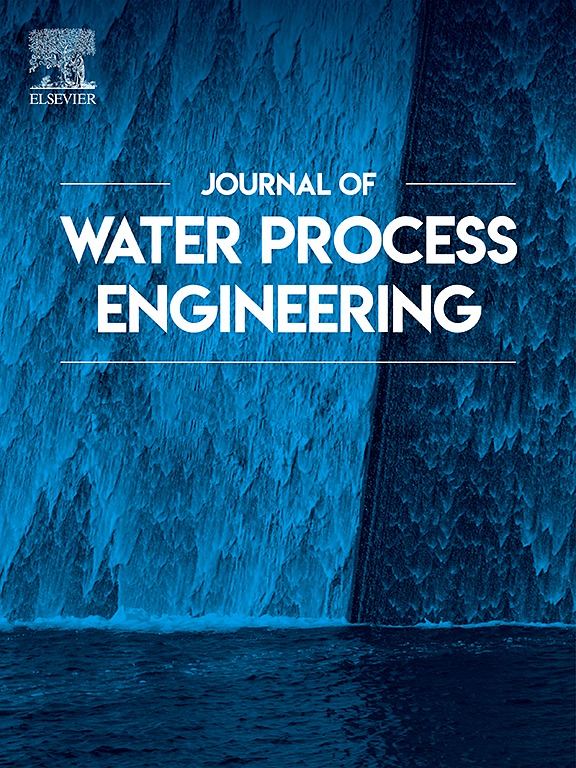Effects on extracellular and intracellular antibiotic resistance genes and their potential hosts in activated sludge under stress of high concentrations of antibiotics
IF 6.3
2区 工程技术
Q1 ENGINEERING, CHEMICAL
引用次数: 0
Abstract
Antibiotic resistance genes (ARGs) including intracellular ARGs (iARGs) and extracellular ARGs (eARGs) are harboured in wastewater treatment plants. This study investigated the effects of short-term and long-term cyclic stress on i/eARGs and microbial communities under high concentrations of sulfamethoxazole (SMX) and trimethoprim (TMP). Secretion of extracellular polymeric substances (EPS) was inhibited under both antibiotic stress modes. Under short-term stress of SMX, the absolute abundance of i-sul1 and i-sul2, which belong to the sulfonamide resistance genes, increased, while i-aac, i-mefA and i-intl-1 were also enriched. In contrast, short-term TMP stress had a limited effect on iARGs, though the absolute abundance of dfrA12 and dfrG increased. Under long-term cyclic stress of SMX, the greatest increase in absolute abundance of i/eARG was observed during the first cyclic stress stage. Under both stresses, there are complex interactions between iARGs and eARGs, with mobile genetic elements (MGEs) promoting certain subtypes associated with them. Both stresses notably altered the intracellular microbial community composition, with abundant, intermediate, and rare taxa responding differently. Abundant taxa (e.g. Brevundimonas) were main potential hosts for iARGs, and intermediate taxa (e.g. Methylocystis) and rare taxa (e.g. Paracoccus) were main releasers for eARGs. These findings provide valuable insights into the dynamics of iARGs and eARGs under high antibiotic stress, advancing our understanding of ARG behavior in wastewater treatment systems.

求助全文
约1分钟内获得全文
求助全文
来源期刊

Journal of water process engineering
Biochemistry, Genetics and Molecular Biology-Biotechnology
CiteScore
10.70
自引率
8.60%
发文量
846
审稿时长
24 days
期刊介绍:
The Journal of Water Process Engineering aims to publish refereed, high-quality research papers with significant novelty and impact in all areas of the engineering of water and wastewater processing . Papers on advanced and novel treatment processes and technologies are particularly welcome. The Journal considers papers in areas such as nanotechnology and biotechnology applications in water, novel oxidation and separation processes, membrane processes (except those for desalination) , catalytic processes for the removal of water contaminants, sustainable processes, water reuse and recycling, water use and wastewater minimization, integrated/hybrid technology, process modeling of water treatment and novel treatment processes. Submissions on the subject of adsorbents, including standard measurements of adsorption kinetics and equilibrium will only be considered if there is a genuine case for novelty and contribution, for example highly novel, sustainable adsorbents and their use: papers on activated carbon-type materials derived from natural matter, or surfactant-modified clays and related minerals, would not fulfil this criterion. The Journal particularly welcomes contributions involving environmentally, economically and socially sustainable technology for water treatment, including those which are energy-efficient, with minimal or no chemical consumption, and capable of water recycling and reuse that minimizes the direct disposal of wastewater to the aquatic environment. Papers that describe novel ideas for solving issues related to water quality and availability are also welcome, as are those that show the transfer of techniques from other disciplines. The Journal will consider papers dealing with processes for various water matrices including drinking water (except desalination), domestic, urban and industrial wastewaters, in addition to their residues. It is expected that the journal will be of particular relevance to chemical and process engineers working in the field. The Journal welcomes Full Text papers, Short Communications, State-of-the-Art Reviews and Letters to Editors and Case Studies
 求助内容:
求助内容: 应助结果提醒方式:
应助结果提醒方式:


